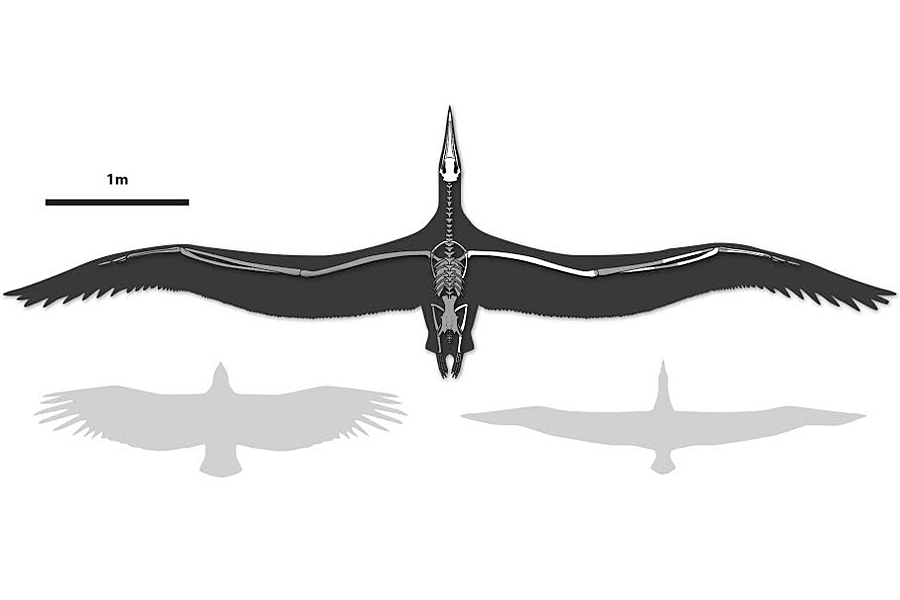Biggest flying bird ever: How did it get off the ground?
Loading...
If you were around 25 to 28 million years ago, you might have spotted large shadow of something passing overhead.
A fossil unearthed three decades ago may have been the largest bird ever to take to the skies, say researchers.
With a wingspan of about 20 to 24 feet, Pelagornis sandersi, was twice the size of today's largest flying bird, the wandering albatross.
Previously, scientists thought birds of this size would be incapable of flight, but this giant seabird was actually skilled at gliding long distances according to the study published this week in the journal Proceedings of the National Academy of Sciences.
These bird bones left no room for doubt of flight, Daniel Ksepka, a paleontologist who conducted this research with the National Evolutionary Synthesis Center in Durham, N.C. The bones themselves are thin and hollow, making them suitable for flight. The bird also had very short legs, a trait conducive to air travel.
But how did the giant take flight with such huge wings? Dr. Ksepka, a new curator of science at the Bruce Museum in Greenwich, Conn. developed a computer simulation to explain just that.
The bird likely launched itself from the ground or ocean surface by running to build power for takeoff, much like an airplane accelerating down a runway. Once in the air, this giant was able to catch air currents under its enormous wings to carry it along.
P. sandersi could soar for miles without exerting energy to flap its wings, according to Ksepka's calculations. With a fishy diet, the bird likely swooped down to capture its prey from its ocean habitat. "Pelagornis sandersi could have traveled for extreme distances while crossing ocean waters in search of prey," said Ksepka in a news release.
This new species is part of a family of extinct large seabirds called Pelagornithidae. These fliers are sometimes called pseudotooth birds because of their distinct jaws. Instead of teeth being separate bones attached to the jaw, these birds had spiky tooth-like protrusions emerging from their jawbones.
"Pelagornithids were like creatures out of a fantasy novel – there is simply nothing like them around today," said Ksepka in the news release. The bird family lived worldwide up until about 3 million years ago, when they mysteriously disappeared.
The P. sandersi fossil was first discovered in 1983 when the Charleston International Airport needed a new terminal. Construction workers unearthed the first bone, but they couldn't just throw the bone aside, because it was so large. They had to extract it with a backhoe. "The upper wing bone alone was longer than my arm," said Ksepka.
P. sandersi contends for the wingspan record with the more massive Argentavis magnificens, formerly thought to be the longest-winged bird ever. A. magnificens, which lived in South America some 6 million years ago, was believed to have a wingspan of about 23 feet.
But the estimate of A. magnificens's wingspan is based on an incomplete set of fossils. Ksepka compares the upper arm bones of the two birds. A. magnificens has a humerus 22 inches long while the P. sandersi has one of 37 inches.
Ksepka isn’t the only one to doubt the 23-foot estimate of the old record-holder. In a 2010 study, researchers asserted that the calculations for the wingspan of A. magnificens were too generous.






